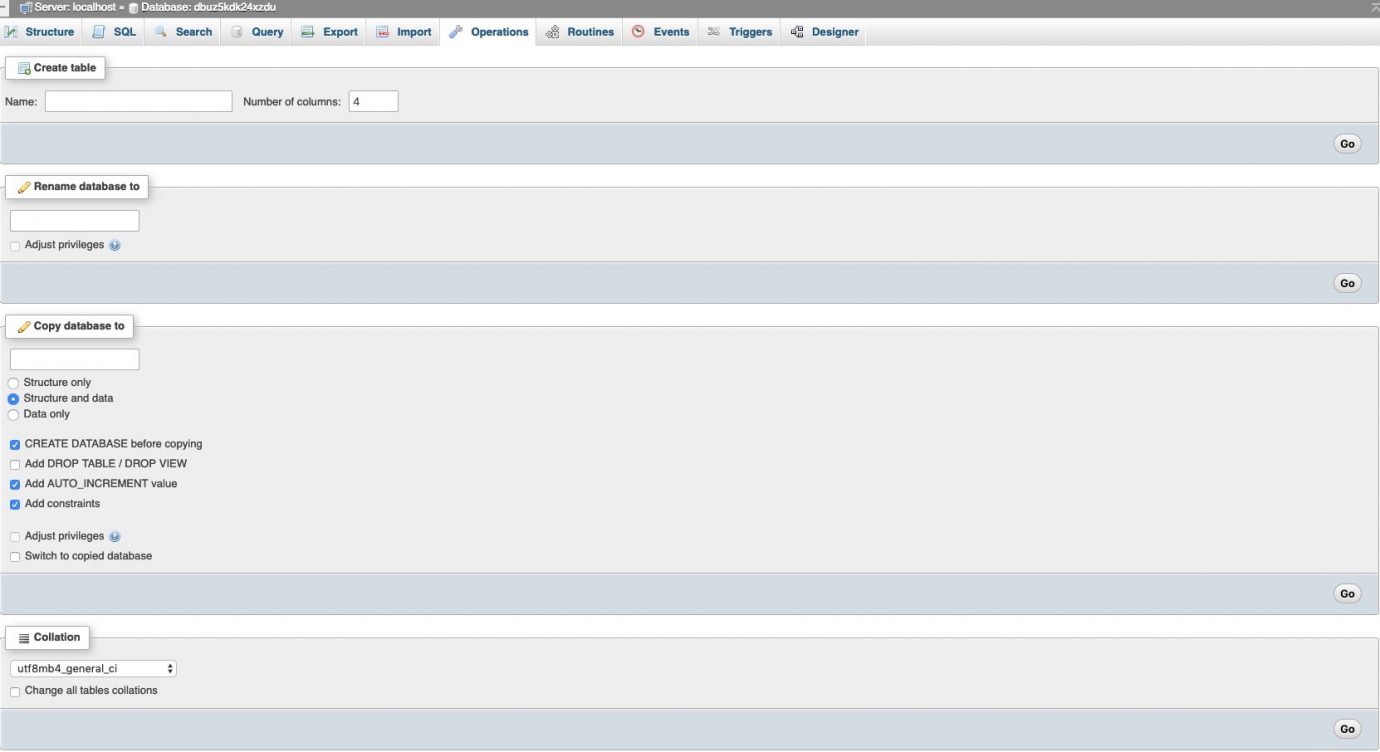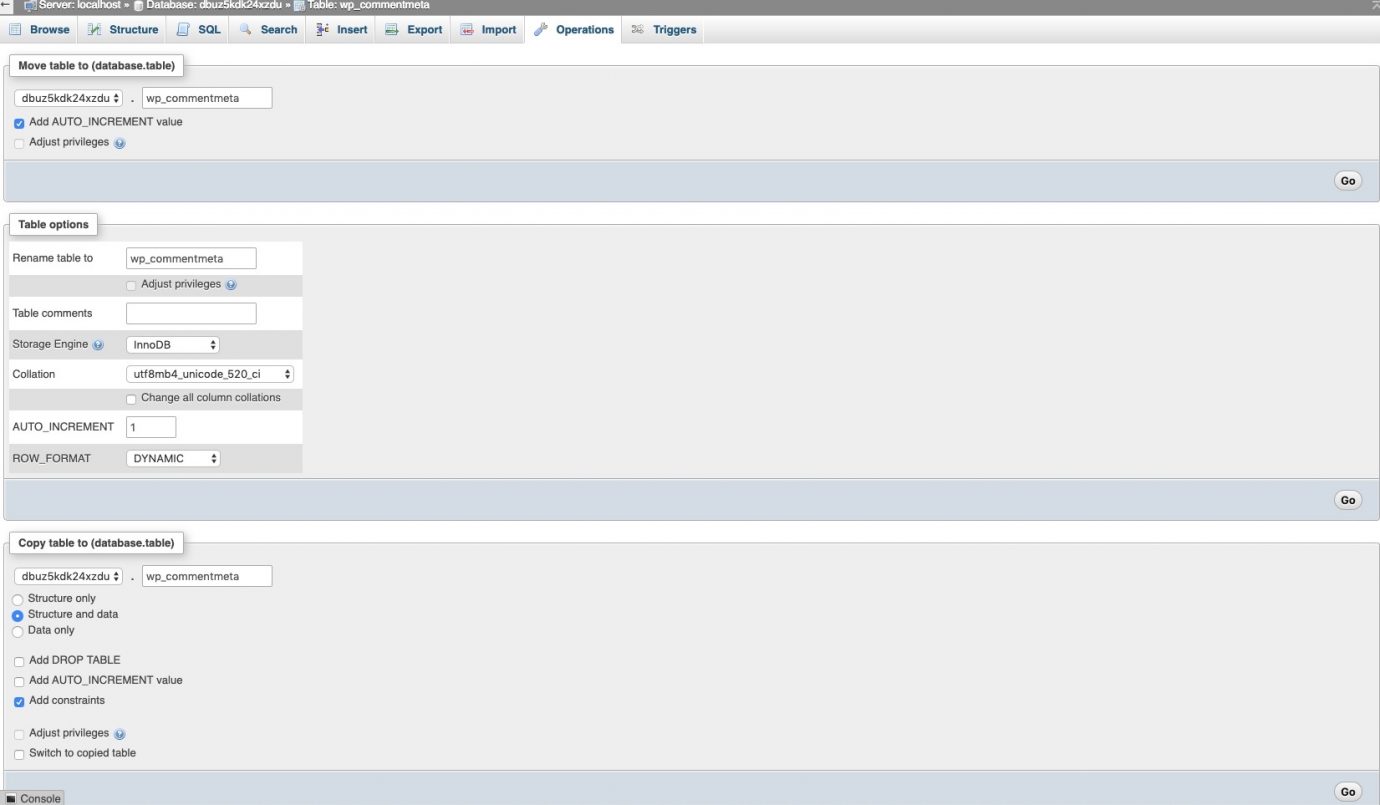phpMyAdmin Operations Tutorial
Table of Contents
There are different operations which you can perform on the whole database and on a separate table.
Database Operations
First, open the phpMyAdmin tool from your Site Tools, then go to the Databases tab. Select a database and navigate to the Operations tab. A new page opens on which you can find all the possible operations which you can use on a database.

The first section is named Create table. It allows you to create a new table under the current database. Enter the table name and the number of the fields. Then click on Go to start the creation of the new table. After that, the process is the same as the one described in our tutorial.
The second section is named Rename database to. Renaming a database cannot be performed directly through the phpMyAdmin area due to lack of privileges for the user. If you want to rename the database, you should create a new MySQL database, export the database tables and import them in the new one. Then you should delete the old database through Site Tools > Site > MySQL > Databases.
The same is the case with the Copy database to section. The difference with the above one is that you should not delete the source database.
The last section allows you to change the database Collation. Pick the preferred one from the drop-down menu and confirm the modification by clicking on Go.
Database Table Operations
To perform the corresponding operations on a database table, you should select the desired table in phpMyAdmin and click on the Operations tab.

The Move table to section allows you to move the table with a new name under the current database or to move it under a different database.
In the Table options section, you can rename the table, insert comments, change the storage engine and the collation.
Using the Copy table to section you can copy the table with a new name under the current database or it can be duplicated in another database.
Under the Table Maintenance section you will find different options which will help you to maintain your database table:
- Analyze table – analyses and stores the key distribution for the table. Then the MySQL server uses the stored key distribution for JOIN operations and for decisions which index to be used in a table query;
- Check table – checks the table and the views associated with it for errors and problems;
- Repair table – repairs a possibly corrupted table;
- Optimize table – the action should be performed when you delete or modify many records from the table. It will reclaim the used space, defragment the data file removing the overhead and sort the indexes.